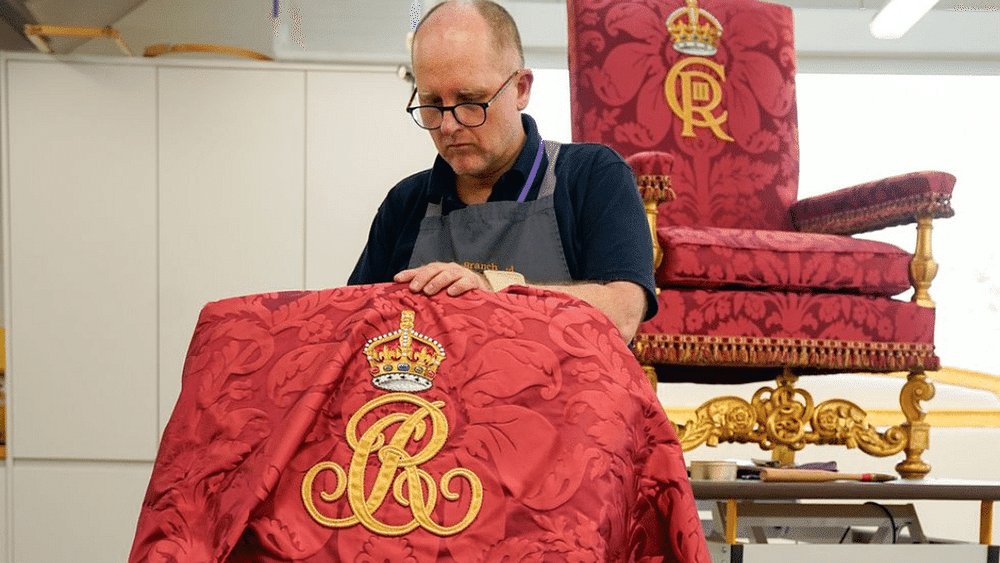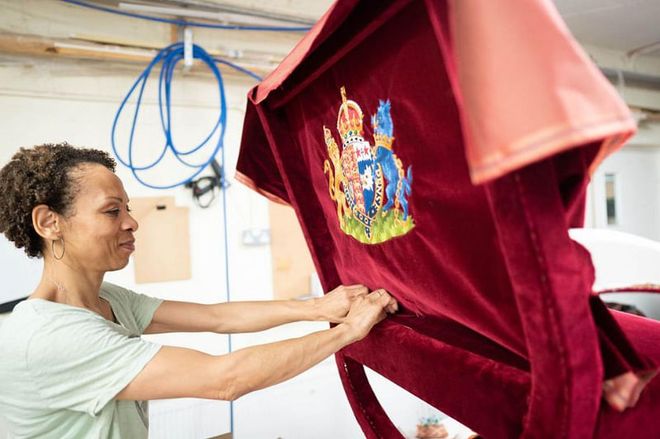Royal Coronation: Which Thrones Will King Charles And Queen Camilla Use?
The king had sustainability in mind with these picks.

Protecting the environment has long been a cause close to King Charles III's heart. And this lifelong passion has influenced various factors presiding over his upcoming coronation ceremony.
One such detail is the king's choice for his and Queen Camilla's coronation thrones. While Charles will be crowned on St Edward's Chair, also known as the Coronation Chair, he and Camilla will also sit upon the Chairs of Estate and the Throne Chairs during different phases of the service.
These picks were made "in the interest of sustainability," Buckingham Palace said in a statement, since they will be reusing chairs made for previous coronations, which were restored and adapted for the forthcoming May 6 event.
Ahead, everything to know about the royal chairs.
Related article: What To Know About The King Charles And Queen Camilla’s Coronation Crowns

Photo: Getty
Royal Coronation Throne
St Edward's Chair
Also known as the Coronation Chair, this extravagant oak piece was first commissioned by Edward I in 1300. It was made specifically to enclose the Stone of Destiny, which England had seized during its conquering of Scotland, beneath it.
Though the colors have mostly faded from it, the chair was originally painted with patterns of birds, foliage, and animals on a gold leaf background. A portrait of a king with a lion at his feet was illustrated on the back. Additionally, four gilt lions from the 18th century sit at the chair's base; this lions replace the originals that were added to the chair in the 16th century.
Charles will sit in this chair the moment he is crowned, following after every other monarch who precedes him that has used this chair in their coronations since at least 1308.
Related article: Royal Coronation: All The Times Princess Kate Has Worn A Tiara Through The Years
Chairs of Estate
The Chairs of Estate were made for the 1953 coronation of Queen Elizabeth II. Though the queen used her chair during the service, the companion chair, made for Prince Philip, was not used. Instead, both chairs were later sent to Buckingham Palace, where they were placed on display in the Throne Room.
Made in the style of 17th century furniture, the seats were crafted from carved and gilded beechwood. Queen Elizabeth and Prince Philip's cyphers were carved in the giltwood stretcher that joins the chairs's front legs with the national emblems of a rose, thistle, and shamrock.
Ahead of Charles and Camilla's coronation, the Royal Collection Trust restored the chairs's giltwood frames. They also added new silk damask woven by the Humphries Weaving Company, which used the same pattern as the original upholstery. The Royal School of Needlework was tapped to embroider the couple's cyphers onto the chairs with cloth of gold, thus replacing the cyphers of Queen Elizabeth and Prince Philip.
Both of the Chairs of Estate will be in use during the beginning of the coronation service and later for the coronation of Queen Camilla.

Photo: Getty
Royal Coronation Throne
Throne Chairs
The Throne Chairs were originally created for the 1937 coronation of King George VI and his queen consort, Elizabeth The Queen Mother.
Made by White, Allom and Company, the thrones were based on a 17th-century style that was in turn influenced by X-framed Tudor stools. The upholstery features a deep red velvet embroidered with the Royal Arms of King George VI and Queen Elizabeth.
For Charles and Camilla's coronation, the Royal Collection Trust replaced the velvet, as well as replicated the seats's original trimmings with new silk braid and trellis fringe. The queen consort's new coat of arms has additionally been hand embroidered onto her Throne Chair.
The king and queen consort will sit upon the Throne Chairs during the Enthroning and Homage phases of the ceremony.
This article originally appeared in Harper's BAZAAR US.